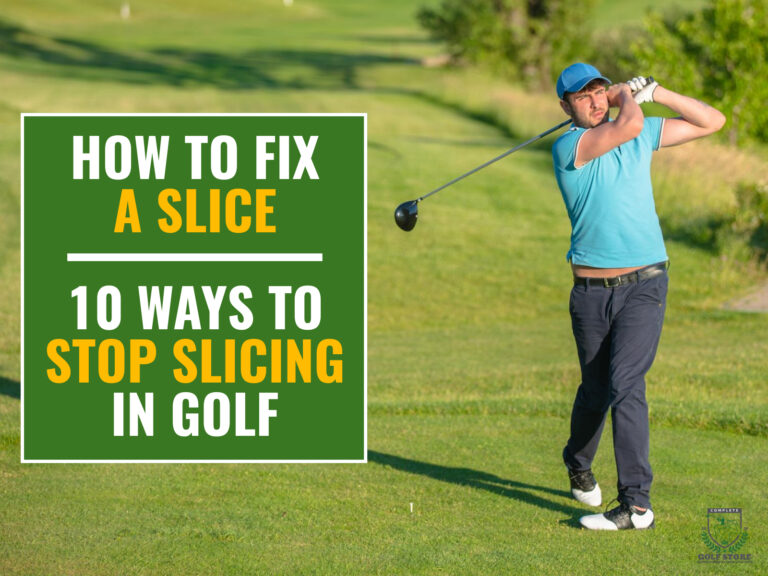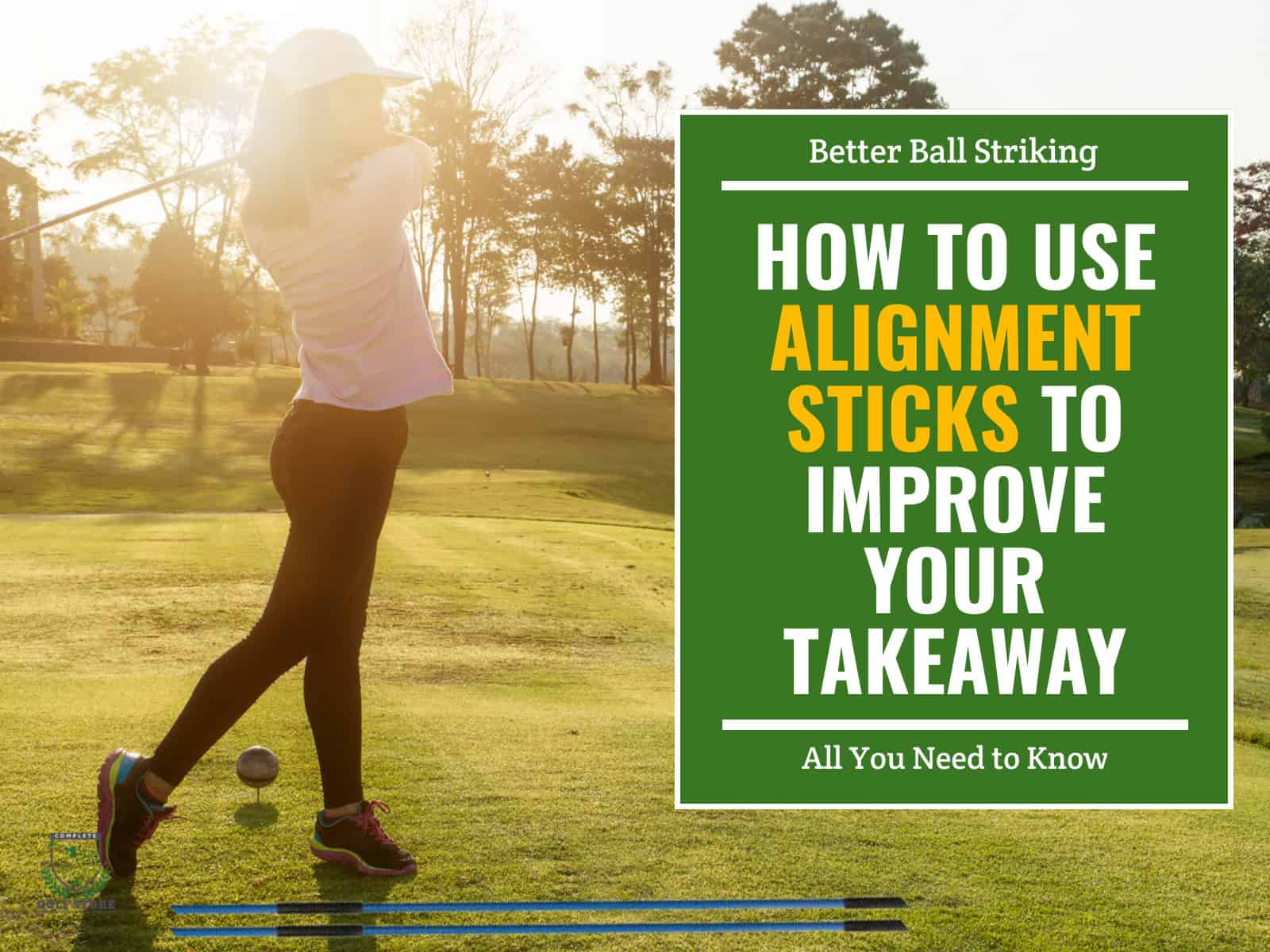Not all slices are made equal. There are numerous reasons why your ball curves to the right (if you are right-handed) or left (if you are a lefty), and before you can fix the issue, you must identify the root cause(s).
As you know, the path toward good golf has no place for slices. Thankfully, solutions exist for even the most significant ones. Even golf clubs designed to relieve the issue are available for purchase.
If you are struggling with recurring slices, we recommend reading through our detailed guide on how to fix a slice.
- 1) What is a Sliced Golf Shot?
-
2)
10 Ways to Fix Your Slice and Play Better Golf
- 2.1) 1. Monitor Your Stance
- 2.2) 2. Look at your Club
- 2.3) 3. Strengthen the Grip
- 2.4) 4. Check Your Left Wrist Position
- 2.5) 5. Position the Ball Properly
- 2.6) 6. Fixing a Slice with Swing Align
- 2.7) 7. Stop Aiming Left
- 2.8) 8. Get the Right Eyeline
- 2.9) 9. Improve Your Contact
- 2.10) 10. Release the Club Prior to Impact
- 3) What Causes a Slice in the Golf Swing?
- 4) Final Thoughts
What is a Sliced Golf Shot?
A slice occurs when the ball is given a sidespin, causing it to curve right for right-handed players and left for left-handed players. When the clubface is open (pointing right) relative to the path of the club as it strikes the ball, a right-side spin is produced. It is one of the most frequent errors made by beginners.
Several factors make a slice a terrible shot. It produces a significant loss of distance and often misses the target to the right.
On the other hand, a fade is a controlled ball flight in which the ball starts to the left of the desired target and then fades back to and finishes at the target. With a fade, little to no distance is lost. Hogan, Nicklaus, and Trevino are three of the greatest golfers in history whose predominant ball flight was a fade.
The amount of curve produced by golf shots increases as club length and loft [1] decrease.
For instance, due to the driver’s longest shaft and lowest loft, it often slices the most and causes the greatest trouble. Therefore, learning how to correct a slice can increase your chances of being in the play off the tee and significantly lower your score.
You may classify a slice into two variations. (Explained from the standpoint of a right-hander)
Classic Slice
Your ball begins to the left of your desired target or starting line, then curves excessively to the right, ultimately landing considerably to the right of your intended target.
Push Slice
Your ball starts to the right of your desired start line or target and continues to the right, missing your target even more to the right.
10 Ways to Fix Your Slice and Play Better Golf
Two aspects of physics are responsible for a slice: the club face and the swing path. When you comprehend a slice’s cause, you can concentrate on fixing it.
1. Monitor Your Stance
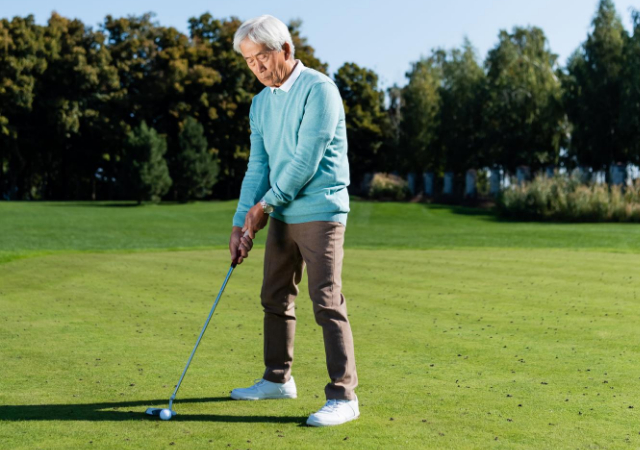
The position has a significant influence in preventing a slice. When viewed from the front, golfers should err on the side of being too narrow rather than too wide. Wide stances can make weight transfer harder and make consistent ball contact less likely.
When observing the stance from behind, two flaws are typically identified. First, the golfer who is sick of striking the ball to the right will continue to aim to the left. This renders it hard for them to square the clubface, as if they did, the shot would miss the target to the left.
Some slicers aim too far to the left (right-handed golfers), necessitating a pull back toward the target. The difficulty is that this stance produces a terrible transition and downswing, making it nearly impossible to alter their swing.
2. Look at your Club
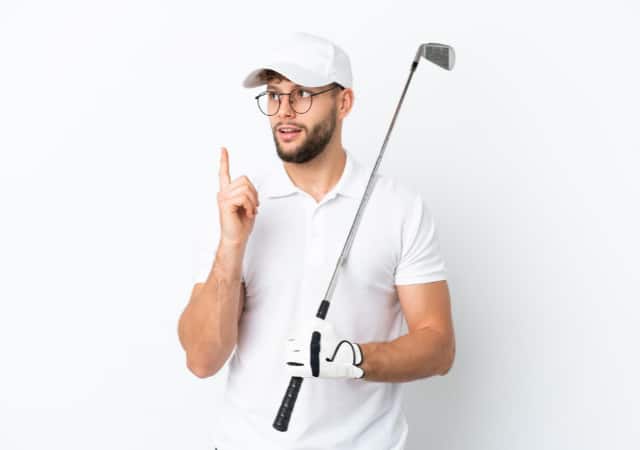
Although we caution golfers not to place too much responsibility on their equipment, your golf club may be the issue.
You may consider getting a golf fitting if you consistently slice with the same driver or iron. If your club does not match your golf swing, the lie angle of your club face will be incorrect.
In a typical playing position, the lie angle is the angle between the toe and heel. We will spare you the details of golf’s mechanics. If your lie angle is incorrect, the club face will make contact with the ball at an angle. This frequently results in a slice.
3. Strengthen the Grip
With a firmer grip, it is possible to control large slices. Conversely, a weak or inadequate grip will destroy your potential and game.
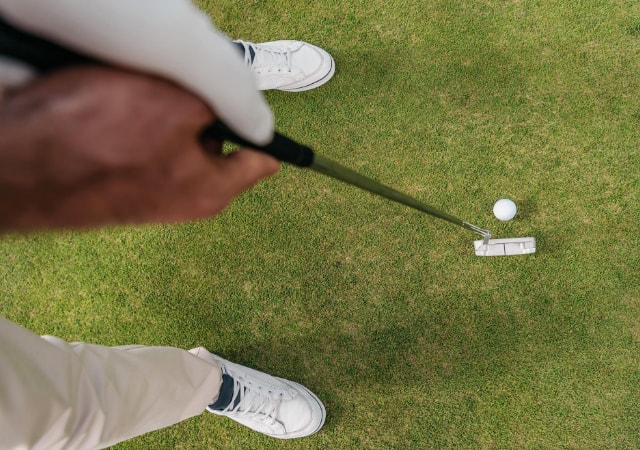
Agreed that a new grip may feel slightly unpleasant, unusual, or awkward at first, but you must realize that it is absolutely necessary if you want to fix your swing path, clubface position at impact, and add more power to your shots.
4. Check Your Left Wrist Position
After grasping the golf club, your left wrist will be accountable for mediating the interaction between the club face and golf swing. The more your left wrist is extended (cupped), the more open the club face will be. The more your left wrist is bent, the more your club face will be closed.
Some golfers have an excellent grip, yet their left wrist is extended during their backswing, downswing, and contact.
The ultimate result is an open club face and an erratic slice. To remedy this issue, perform half swings with a flexed (bent) left wrist. Maintain this sensation as you swing back, down, and throughout your shoots.
5. Position the Ball Properly
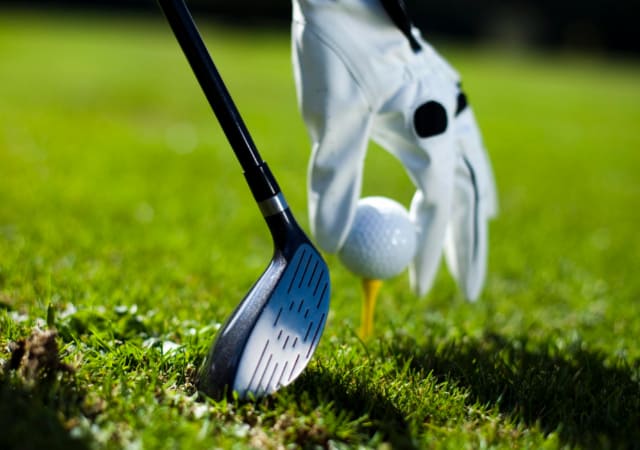
The placement of the ball in your stance can have a substantial effect on the ball’s flight. A common error made by golfers with high handicaps is placing the ball too far forward. Ensure that the ball is not too far ahead.
In a proper swing path, the club head will travel in an arc. The club will approach the ball from inside the target line on the downswing. As it approaches the impact zone and continues just beyond it, the head will be traveling directly along the target line. And then the club returns to the inside of the line.
This proper inside-straight-inside arc illustrates where the ball should be placed. If the ball is positioned too far to the target side of your stance, the club’s movement on the arc outlined above will have already begun to return to the inside by the time it makes contact with the ball. If your club is traveling to the inside at this vital moment (rather than directly down the line), it is again cutting across the ball and imparting sidespin, resulting in a slice.
To solve this issue, be aware of where the ball is positioned along the right swing path arc, and land the ball in the impact zone at a point where your club head is traveling down the target line but not so far ahead that it has begun to transition back to the inside.
6. Fixing a Slice with Swing Align
Swing Align can assist you to stop slicing in a variety of methods, from setup to finish.
The clearly visible alignment rod provides perfect setup and upper body alignment, which are essential for a good route back to the ball. You are already doomed to slice if you open your shoulders during setup.
On the backswing, attempt to get as near as possible to a 90-degree turn. Having the ability to use the alignment rod to determine if you are fully rotating will provide power and depth to your backswing, allowing you to create an inside path on your downswing.
At the top, the connection belt will ensure uniform elbow spacing. It prevents your arms from swinging too far and your right elbow from escaping the body. During the downswing, the connection belt maintains your arms and body synced and connected so that you can have the sensation of a powerful swing.
At impact and throughout the follow-through, the connecting belt facilitates the release of the club with precision and force. It is nearly impossible to chicken-wing the lead arm through impact, a common cause of an open clubface and a slicing shot.
Here’s an introductory video (51 seconds) of the Swing Align training aid.
7. Stop Aiming Left
The slice will miss even further to the right when you aim to the left. Don’t compensate by believing you must aim even further to the left as opposed to your slice. This will exacerbate the problem!
Instead of aiming to the left, attempt to tee off from the right side of the box. This will provide you with an additional fairway and room to maneuver the ball off the left side of the fairway or into the rough. Adjusting your aim is a temporary solution, but it will not address the underlying causes of your problem.
8. Get the Right Eyeline
Eyeline Golf Speed Trap is another swing training device that might improve your ball flight. It is a relatively inexpensive training device that can teach you how the route of your swing affects the curve of your shot.
The device is rather straightforward; it consists of a board with four foam training rods that you place to practice different types of shots. If you wish to correct your slice, you will reposition the rods so that they point toward you. Then, if you make contact with the rods while swinging the club, you will receive a quick indication that you have gone too far.
It is beneficial to have a visual reminder because it will train you to take a more inside route on your downswing, which will straighten your club face. In addition, you can use it to practice hitting straight strokes or, if you draw the ball, to practice hitting cut shots.
Here’s a video (2 minutes 45 seconds) on how to use the Eyeline Golf Speed Trap.
9. Improve Your Contact
You want the contact to be centered or perhaps slightly toe-heavy. Additionally, due to the design of clubs, particularly drivers, shots struck toward the toe have a greater right-to-left spin. All of this increases your likelihood of hitting a draw.
10. Release the Club Prior to Impact
There is only a fraction of a second between a timely forearm release – and a straight drive – and a late forearm release, so establishing a proper release can require practice. Incorporating the above slice solutions will help you to reduce the dreaded slice, but your results will remain unpredictable if you consistently release the club too late. The objective is to maintain a golf swing while hitting the club in the direction of the target.
When you’ve mastered the task, repeat it. Then repeat the process until it becomes second nature.
Experienced players have discovered that approaching the ball from inside the target line and initiating the downswing with the lower body rather than the upper body is more successful. In the downswing, moving the right elbow toward the right hip instead of coming over the top helps to create an in-to-out swing path. This is the only way to accomplish a pure right-to-left ball flight.
Here’s a great video (4 minutes 27 seconds) from Rick Shiels Golf that thoroughly discusses how you can fix your slice when playing golf.
What Causes a Slice in the Golf Swing?
Many golfers struggle with a slice since they do not understand its cause.
Weak Grip
Many golfers’ troubles with a slice stem from how they hold the club.
You may have a “weak grip,” which indicates that your thumbs are positioned higher on the club. When you swing with this grip, your hands resist their natural urge to bring the clubface to a square position at impact, leaving the clubface open, resulting in a slice.
Instead, attempt to rotate your hands so that you can see the top three knuckles of your non-dominant hand. This will increase the likelihood that you will rotate your wrists at the bottom of your swing and square the clubface.
You may also grip the club excessively tightly, which similarly restricts your wrist and hands’ natural tendency to restore the club to its square position upon impact, resulting in a slice.
Open Club Face
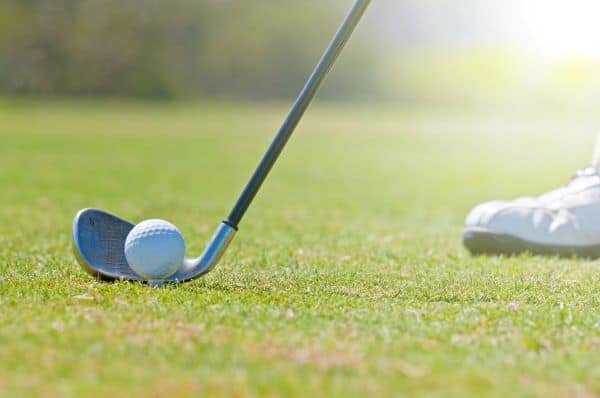
An open club face [2] is the most prevalent source of slices. This open club face will result in off-square contact that frequently feels like a “sideswipe.” The most prevalent cause of an open clubface is an improper grip, as the location of your hands directly reflects on the face.
This adjustment can be made by turning one of both hands away from the target. In other words, a right-handed golfer would rotate their hands to the right. When making this change, it is frequently necessary to make additional adjustments.
Bad Posture
Your ability to execute a good backswing will be negatively impacted by an excessively upright stance and a lack of forwarding range of motion.
An excessively upright posture will tend to place too much weight on the heels, which is often followed by a backswing that is too upright and elevated, resulting in a slicing path on the downswing. Even though all golfers are built differently and have different postures, allowing your hips to dip slightly so that your arms can hang loosely will allow you to be athletic and balanced.
Balance and athleticism will help you to execute a proper backswing.
Active Upper Body
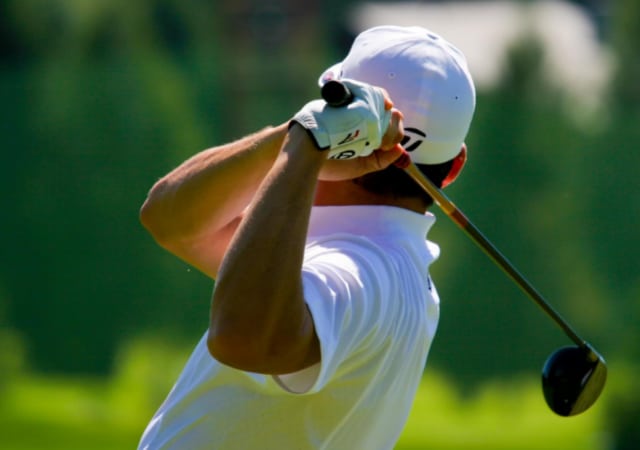
Lower body motion must lead to upper body motion in the golf swing sequence. As your weight transfers to your lead foot, you can then begin to rotate your torso toward the golf ball. Unfortunately, the majority of slicers initiate the downswing with their upper torso, particularly on the driver swing, which results in significant misses.
If you slice the ball, you almost always begin your swing with your shoulders or arms rather than your lower body. When your upper body is extremely active, you will twist and draw the ball with an open club face. This causes the irritating pull slice that troubles most beginner golfers.
Your overactive upper body may result from an improper plane on your backswing, a rapid transition, or a lack of flexibility.
Final Thoughts
When the clubface is open, golf shots will go right instead of straight, which is known as a golf slice.
Knowing that this problem can be solved even if you’ve previously struggled to do so will give you hope.
However, it may take some time and effort to become used to the new feeling before you’re able to hit the target with a square face. If you’ve been troubled by this miss for a long time, know that it’s not going to go away overnight, but it can be fixed in the long run.
You’ll be able to hit the ball further, higher, and straighter than ever before if you learn how to swing correctly and square the clubface at contact. Keep these principles in mind when practicing on the range, rather than trying to execute them throughout the round.
Don’t be hesitant to switch to a 3 or 5 wood off the tee if you feel your slicing growing worse as the rounds progress. In order to square up your driver more frequently because of its length/loft and its tendency to curve, you may want to consider clubbing down.
References:
- What Is Loft in Golf? Golf Week. Retrieved from https://golftips.golfweek.usatoday.com/loft-golf-2408.html
- The Open Face in Golf: When It’s Good, When It’s Bad, Why It Matters. LiveAbout. Retrieved from https://www.liveabout.com/open-face-in-golf-1564061


